EdSource asked leaders representing all segments of California’s education system to comment on Gov. Newsom’s 2021-22 budget proposal. This year, we’ve presented their responses in reverse alphabetical order, which seemed apt for these topsy-turvy times.
Scroll down and click on the photos to read their thought-provoking responses on the governor’s plans for early education and K-12. Also see what education leaders are saying about the governor’s postsecondary education budget.
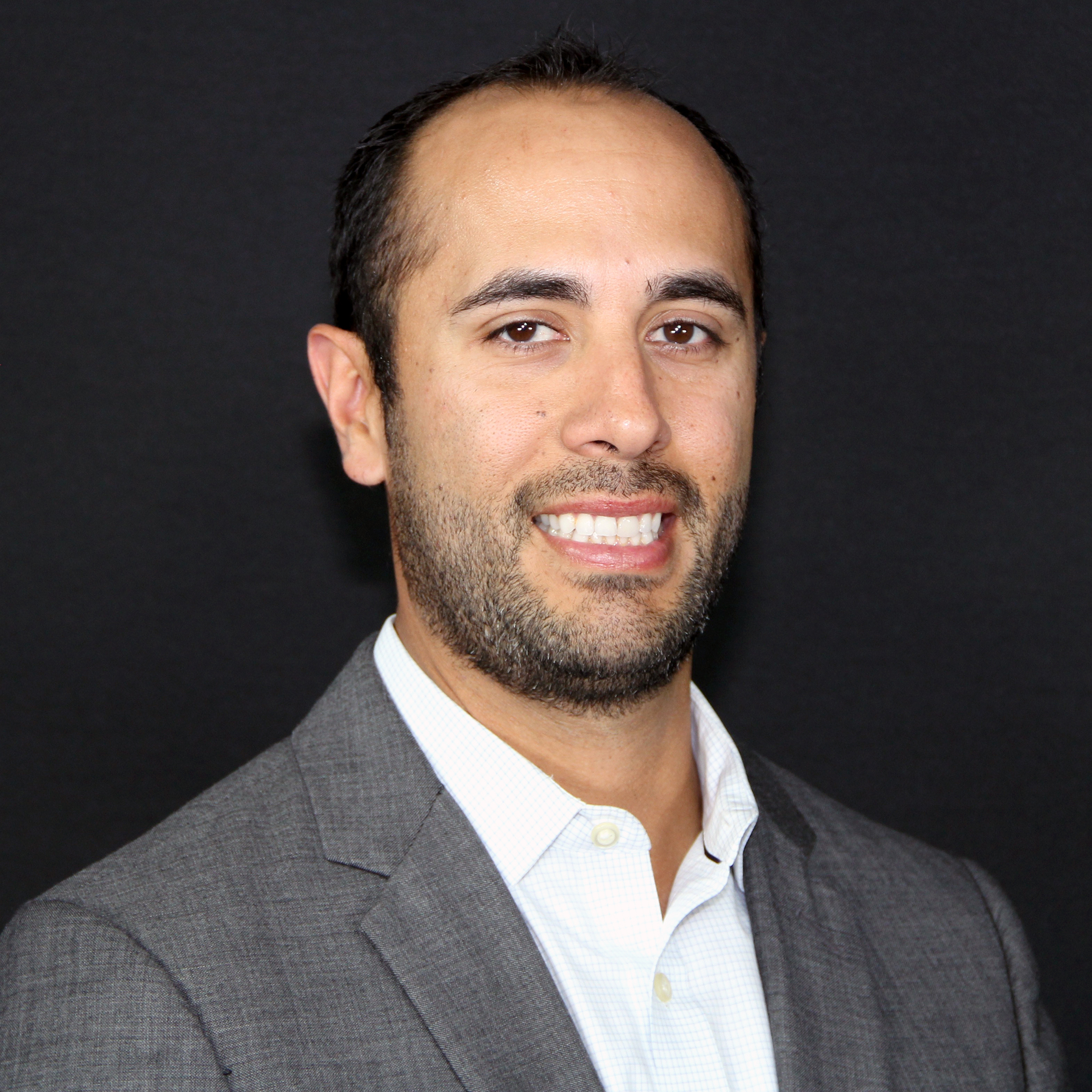
Edgar S. Zazueta
Association of California School Administrators (ACSA)
What stands out in the governor’s proposed budget for education?
The proposed state budget for education is in a much better place than most of us would have anticipated last spring. While acknowledging the continued challenges with school funding in California, the proposed investments are a welcome start to the new year. The obvious highlights of the state budget for education are the governor’s plan to incentivize the reopening of schools for in-person instruction and the efforts to mitigate potential learning loss as a result of the pandemic.
What changes would you recommend that the Legislature make to it?
Although the governor’s reopening proposal has merit, substantial changes will be necessary to make the incentives viable for most schools. The aggressive timelines for submission of plans require collective bargaining and consultation with other stakeholders. The changes to Covid surveillance testing for students and staff might be overly ambitious for many communities to adhere to given current capacity. Under the proposed system of guidelines, educators will continue to be put in a position of having to make public health decisions and determining when “it is safe” to return to school. Unfortunately, that continues to leave the opportunity for inequities for students in communities where there has been historical challenges to finding agreement.
Edgar Zazueta is senior director, Policy & Governmental Relations, for the Association of California School Administrators.

Jason Willis
WestEd
What stands out in the governor’s proposed budget for education?
Governor Newsom’s January budget proposals contain a series of priorities that remain consistent with the emphasis of the last few years. And, in whole, there is a clear theme of aiming to advance interagency cooperation among child-serving agencies at the state and local level. This pandemic has brought to the front of our collective consciousness the need to lean on expertise across disciplines — early learning and care, special education, children’s physical and mental health — to address complex challenges together. Leveraging the resources proposed in this budget in this way will ensure we are wisely spending every public taxpayer dollar to accelerate our recovery and innovate the service delivery to California’s most vulnerable children.
Jason Willis is an area director for strategic resource planning and implementation at WestEd.

Loretta Whitson
California Association of School Counselors
What stands out in the governor’s proposed budget for education?
Since last March, we have seen firsthand just how important it is that children be in school, interacting with their peers, teachers, and school staff. While school counselors have gone to great lengths to stay connected with their students in a virtual world, the disruption and distance caused by the pandemic has led to a mental health crisis among our young people that cannot be ignored.
I appreciate that the governor has made student mental health one of his top priorities, and I look forward to partnering with his team to ensure school counselors, school psychologists and social workers continue to be integral in working on behalf of addressing student mental health. We know that students are more likely to open up to people on campus with whom they already have developed a trusting relationship, and now, more than ever in my professional career, we need to make sure all students are connected to adults they are familiar with on their school campus who are trained in mental health and who can assist with their recovery and overall well-being.
Loretta Whitson is executive director of the California Association of School Counselors.
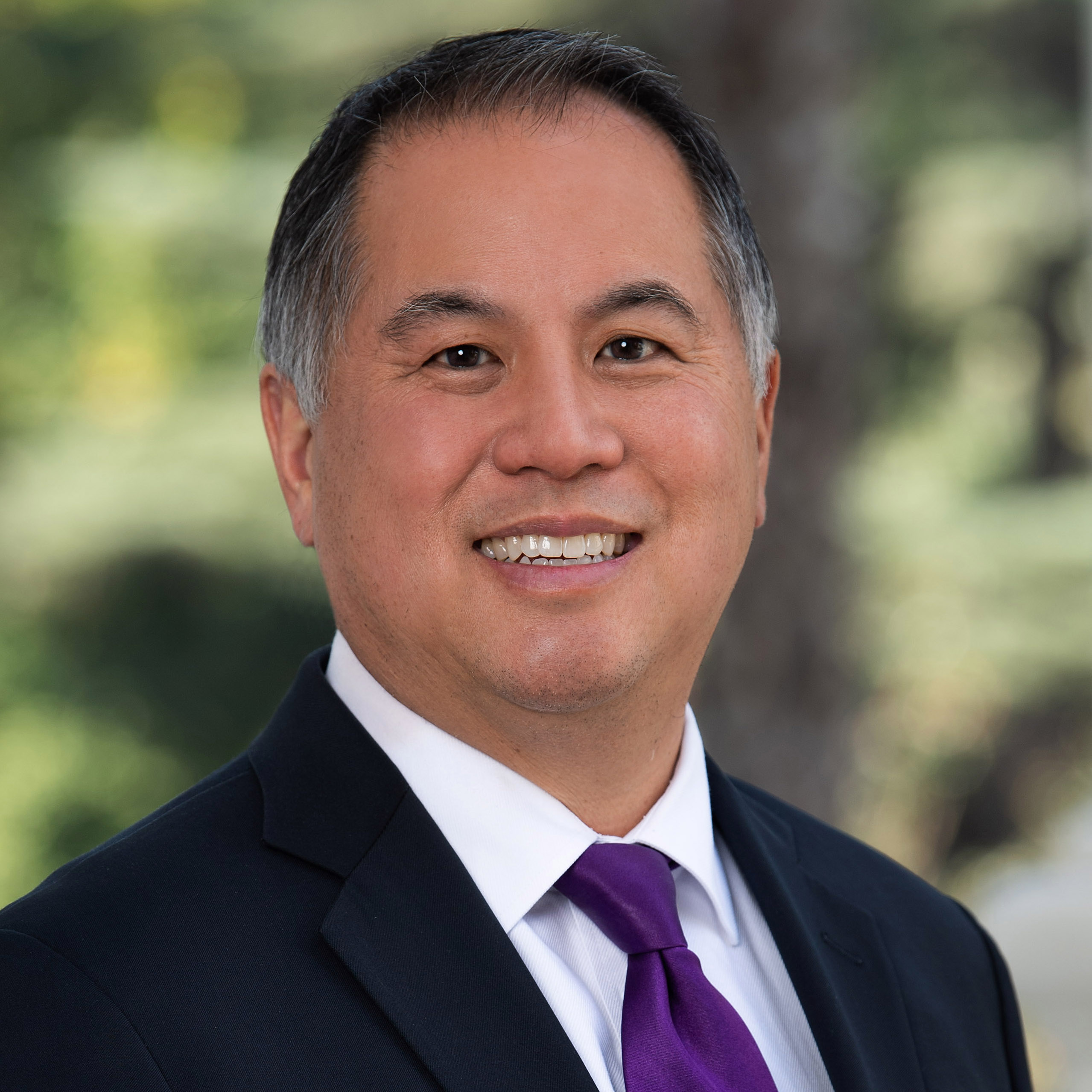
Assemblymember Phil Ting, D-San Francisco
Chair of the Assembly Budget Subcommittee on Education Finance
What stands out in the governor’s proposed budget for education?
The governor’s proposed budget for K-12 schools has components similar to those outlined in the Assembly Democrats’ Budget Blueprint released last month. California’s better-than-expected revenues this year will allow us to invest in public education like never before. We have the opportunity to not only provide more resources for the safe reopening of schools, but also address learning loss to help low-income students disproportionately impacted by remote classes during Covid-19. I’m especially glad to see the expansion of Transitional Kindergarten to all four-year-olds to ensure every kid has a good start to their schooling. We will work together to finalize a budget that provides all children a bright future despite our incredibly challenging year.
Assemblymember Phil Ting (D-San Francisco), is chair of the Assembly Budget Subcommittee on Education Finance.

Tony Thurmond
State Superintendent of Public Instruction
What stands out in the governor’s proposed budget for education?
I want to thank Governor Gavin Newsom for proposing a budget that — until our educators, school employees and communities are vaccinated — addresses main areas of need as public schools consider how to safely resume in-person instruction. Today’s budget proposal also represents a strong start at tackling the growing access and learning gaps experienced most severely among our students of color, low-income households, children with disabilities, and students learning English.
What changes would you recommend that the Legislature make to it?
We look forward to working with the Governor’s Office, the Legislature, and all educational stakeholders on the details of today’s budget proposal. As the budget process plays out, we think there are opportunities to engage and solicit input from California’s students, families, educators, and partners to explore ways we can do more to begin offsetting learning gaps now, including identifying more academic enrichment opportunities, expanded learning programs and interventions, and family engagement strategies. Greater investments in mental health also will be critical moving forward to address the severe trauma our students have experienced during this crisis, which we know will have a lasting impact on their ability to learn and succeed through the rest of lives.
Tony Thurmond is California’s State Superintendent of Public Instruction.

Tim Taylor
Small School Districts Association
What stands out in the governor’s proposed budget for education?
The amount of money and funding for K-12, even without the new round of fed dollars, is incredible. We need to fund testing outside of the Prop 98 guarantee.
What changes would you recommend that the Legislature make to it?
- We need to explore the minimum grant amounts for small districts.
- Eighty-three districts will not receive any federal Covid funding, even though many of them are serving high percentages of students eligible for free and reduced lunch.
- We need to roll back all deferrals.
- We need to make the districts who experienced enrollment or ADA growth in the 2020-21 school year whole.
Tim Taylor is the executive director of the Small School Districts Association.

Anne Stanton
Linked Learning Alliance
What stands out in the governor’s proposed budget for education?
In this period of crisis and economic uncertainty we absolutely applaud a budget that invests in young people—our state’s most precious resource. The Linked Learning Alliance is especially pleased to see that the proposed budget prioritizes students’ social-emotional and academic needs simultaneously. Deep inequities that derail students on the path to college and career have only worsened since March. Our experience and research with Linked Learning affirms that the governor’s proposed investments to address student mental health and school climate, and to support community schools will be critical for keeping students connected to their sense of purpose and postsecondary aspirations.
What changes would you recommend the Legislature make to it?
We’re pleased the proposed budget includes investments linking data between K-12 and post-secondary systems to fuel shared college and career readiness goals for students, but more must be done to mind the gap between the high school to college transition. To move successfully from one educational segment onto the next, youth need adults and support systems working together. While K-12 is making education more relevant and rigorous for all students, it’s more important than ever to connect the dots between educational segments and the world of work to plot a clear path from learning to lifelong success.
Anne Stanton is president and CEO of Linked Learning Alliance, which leads a movement to help every young person determine their own future through a proven approach that integrates rigorous academics with real-world learning and strong support services to prepare students for success in college, career, and life.

Karn Saetang
Californians for Justice
What stands out in the governor’s proposed budget for education?
After a year when families, especially Black, brown, and indigenous students, faced a pandemic, natural disasters, a historic election, and white supremacy, we appreciate the Governor addressing equity in education.
For many communities-of-color, mental health and wellness is a racial equity issue. We applaud the Governor’s investment through an additional $264.9 million to establish and expand community schools, $450 million for mental health supports and services, and $10 million for school climate surveys. We also commend the investment in professional development and resources for educators for re-engaging students, restorative practices, social-emotional learning, and ethnic studies.
What changes would you recommend that the Legislature make to it?
As we start seeing the potential sunset of Covid, we also understand that there will be long-term generational impacts from the pandemic for students, which requires long-term multi-year budget commitments to invest in that recovery and strengthen public schools.
We need the legislature to lead on this issue in partnership with students, families and educators. The $4.6 billion investment in learning recovery is a good start, but needs to be part of a multi-year plan for a fully funded California public education system that is built to support the potential of all students.
Karn Saetang is alliance and policy director at Californians for Justice, a statewide youth-powered organization fighting for racial justice.

Arun Ramanathan
Pivot Learning
What stands out in the governor’s proposed budget for education?
Our public education system was so inequitable before the pandemic that it was hard to imagine it getting worse. But the shift to distance learning has caused our most vulnerable students to fall even further behind academically. It’s vital that our state’s leaders — including our Governor — take stronger leadership in re-opening schools, prioritizing high-quality instruction and support for students with disabilities, English learners, foster and homeless youth.
What changes would you recommend that the Legislature make to it?
While the Governor’s budget funds summer learning and social-emotional supports, it does not provide the state-level leadership and priorities to equitably re-open our schools. That will require the Governor and state leaders to be as directive about their expectations for our education system as they have been on health and safety.
Arun Ramanathan is CEO of Pivot Learning, a nonprofit organization whose mission is to partner with educators to design and implement solutions to their greatest challenges in achieving educational justice.

Anjanette Pelletier
San Mateo County SELPA
What stands out in the governor’s proposed budget for education?
The budget holds positive news for special education. What stands out? The governor continues substantial commitment to students with special education needs, and has proposed ongoing funding that will support inclusive and evidence-based preschool services.
The Special Education Early Intervention Grants proposal is $300 million ongoing, and restricted. This announced funding will support inclusive practices for toddlers and preschool children. We will be very interested to see the trailer bill language around how these funds will be tracked and monitored for impact.
What changes would you recommend that the Legislature make to it?
The Local Control Funding Formula is proposed to receive a compounded COLA of 3.84%. Special Ed is only targeted for statutory COLA (1.5%), even though the program also received 0% COLA in 2020-21. Knowing it is critically important to provide preschool services for children with disabilities, we have long advocated for additional funds; however, we believe the funds should be provided as K-12 funds are provided, through the AB 602 structure. We would advocate for all education programs to receive consideration rather than a bifurcated COLA.
I am very interested in trailer bill language around Necessary Small SELPAs and Out of Home Care – these programs deserve adjustments and continuation, there have been work groups convened to discuss resolutions, and I hope the bill addresses these small but important special education programs.
Anjanette Pelletier is a Special Education Local Plan Area (SELPA) director for San Mateo County Office of Education and chair of the Coalition for Adequate Funding.

Jennifer Peck
Partnership for Children and Youth
What stands out in the governor’s proposed budget for education?
I’m excited to see Gov. Newsom’s proposed $4.6 billion for mitigating learning loss through expanded learning programs. This recognition of the role of afterschool and summer programs — which have been a lifeline for our most vulnerable students this year — is overdue and very welcome. There are decades worth of research and evidence on the effectiveness of quality afterschool and summer learning programs in combating learning loss and supporting students’ social and emotional well-being, and it’s critical we build on what works. Expanded learning has always been central to achieving equity in our education system and it’s encouraging to see this acknowledged in the governor’s budget.
What changes would you recommend that the Legislature make to it?
$4.6 billion provides a huge opportunity to make a difference for kids — yet, with a tight timeline and without the right conditions, we could miss this opportunity. California has an existing expanded learning system we’ve spent two decades building; let’s leverage that system rather than creating something new. Let’s also leverage our community-based organizations whose staff have relationships with families and will be key to engaging the most disconnected students. Also, why exclude our existing state-funded expanded learning programs from a badly needed COLA? Once again the governor proposed a COLA for some categorical programs but left out the Afterschool Education and Safety program which is hanging on by a thread. This makes no sense.
Jennifer Peck is president and CEO of the Partnership for Children & Youth, an advocacy and capacity-building organization championing high-quality learning opportunities for underserved youth in California, with an emphasis on after school, summer learning, and community schools.
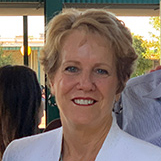
Sara Noguchi
Superintendent of Modesto City Schools
What stands out in the governor’s proposed budget for education?
We appreciate the governor’s proposed continued investment in schools and the acknowledgment that opening schools during a pandemic takes significant resources. Proposals such as the $4.6 Billion one-time funding to pay down deferrals to support CalPERS/CalSTRS, as well as the COLA, will dramatically help our mid-year projections.
However, it’s problematic to fund Covid costs out of Proposition 98. California’s education system is already underfunded, and districts are doing their best to maximize funds to help every student succeed. The health and safety of our staff and students is a priority, but every dollar spent on public health is a dollar that can no longer be used to directly support teaching and address learning gaps for our diverse student populations.
What changes would you recommend that the Legislature make to it?
One recommended change would be the need to re-negotiate MOUs with labor partners. Our district is currently open for PreSchool-sixth grade utilizing a hybrid in-person and distance learning instruction model. Prior to opening schools, the district and our labor partners already spent significant time and effort to reach negotiated agreements, which are based on our comprehensive safe schools reopening plan that continue to meet State/County Public Health and OSHA guidance.
Another recommended change involves shifting the focus from weekly testing schedules to ramping up vaccinations for the education sector. We agree the $450 per pupil funding is needed; however, due to the rapidly changing dynamics of the pandemic, we feel there should be an immediate focus on supporting the administration of vaccines in an effort to avoid future quarantines that could reduce the number of staff needed to keep our schools open. Instead, we believe focusing on reducing the transmission of Covid-19 through vaccine inoculations for the education sector is the most advantageous approach.
Sara Noguchi is the superintendent of Modesto City Schools. Modesto is a lead district of the California Association of Suburban School Districts (CalSSD).
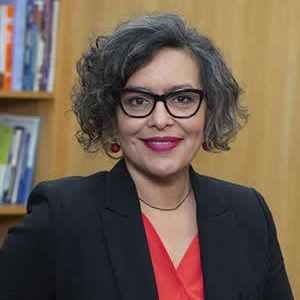
L. Karen Monroe
President of the California County Superintendents Educational Services Association (CCSESA), Alameda County Superintendent of Schools
What stands out in the governor’s proposed budget for education?
The governor’s proposal reflects many pandemic-realities that schools face as they plan and prepare for the return of students to classrooms. Additional funding is always needed in public schools to support vital work, and particularly now, in order that schools have the resources they need to support a multitude of Covid response measures, including PPE, ventilation and staff and student testing. We are encouraged that the plan provides for technical assistance at a state level, as well as some critical measures of accountability and transparency for school communities to be able to both see and trust what is happening in their local schools.
What changes would you recommend that the Legislature make to it?
Whatever plan comes out of this proposal must be equitable. It must ensure that there is equity in the distribution of resources to schools and districts, no matter how restrictive the tier that your county is in. We appreciate the support of testing for staff and students, but County Offices of Education must be in a position to support districts in operationalizing that rollout. And that process must also be well-supported by the state. Many districts have reopened while being responsive to changing realities in their areas. Those districts need to have the flexibility to build on what has been working, while those who have yet to open need support to find a way to returning their students to class. And lastly, the Legislature needs to build in flexibility for a Covid reality that extends, in some shape or form, into the 2021-22 school year rather than assuming that in-person instruction is the default for 21/22.
L. Karen Monroe is president of the California County Superintendents Educational Services Association (CCSESA) and Alameda County Superintendent of Schools.

Julie Marsh
USC Rossier School of Education
What stands out in the governor’s proposed budget for education?
The budget reflects a strong equity orientation, prioritizing additional resources to support students hardest hit by the pandemic and historically marginalized. This should be applauded. It also rightly responds to pressing concerns around learning loss and student mental health, along with longstanding problems (e.g., teacher shortage, underfunding of special ed). The core tension of state vs. local control shines through, clearly eschewing a more centralized state approach to the politically charged issue of school reopening. What is missing? More funding in key areas (e.g., early learning, special ed) and more specificity around and consideration of unintended consequences of the in-person instruction grants.
What changes would you recommend that the Legislature make to it?
The $2 billion in-person grants may further exacerbate inequities if those most affected by the pandemic in large, urban districts continue learning online while students in wealthier, or in some cases small, districts return in person with these new resources. The Legislature must address these concerns. Also, clarify the logistics and costs of the Covid testing and safety – it is not clear communities have the capacity to do what is asked. Other: Extend funding for the mental health needs of educators. Specify how quality implementation of new initiatives will be supported. Focus non-education resources on reducing the virus spread in low-income communities of color.
Julie Marsh is a professor of education policy in the Rossier School of Education at the University of Southern California and co-director of Center on Education Policy, Equity and Governance. Marsh is also faculty director at Policy Analysis for California Education (PACE).
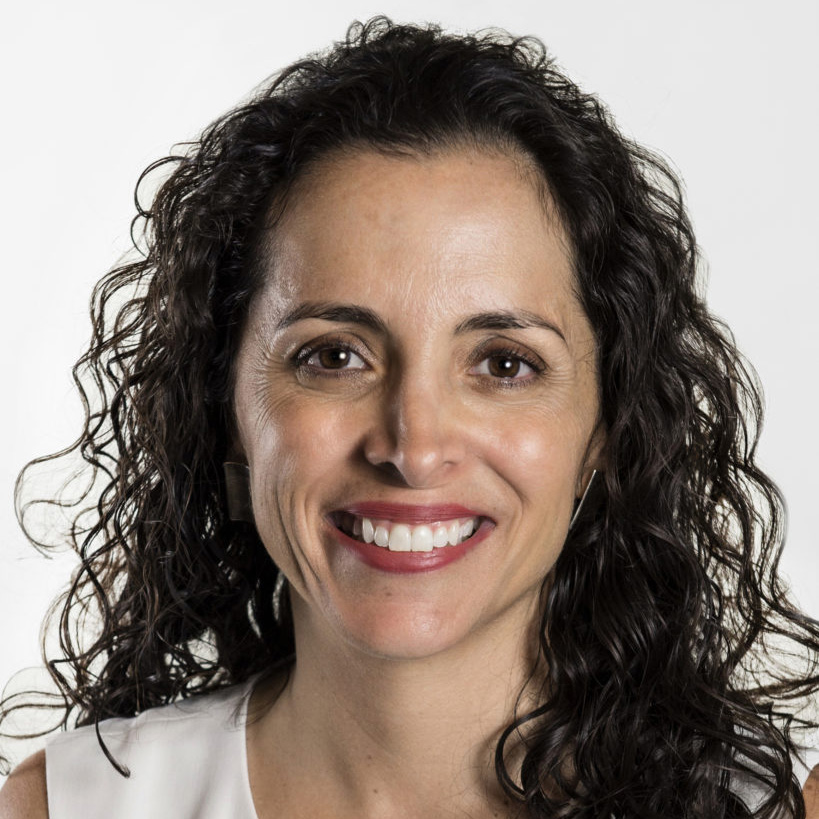
Patricia Lozano
Early Edge California
What stands out in the governor’s proposed budget for education?
Governor Newsom is keeping his commitment to Early Learning by prioritizing investments to stabilize our system during the health and economic crises that continue to challenge our state. This year’s budget provides a strong starting point for implementing the Master Plan for Early Learning and Care. We appreciate the one-time investments in TK and in professional development for teachers, including training to support Dual Language Learners, as well as key investments in school facilities, child care, special education, and early literacy. We look forward to collaborating with the Governor, his Administration, and the Legislature to ensure all young children thrive.
What changes would you recommend that the Legislature make to it?
We should work with the Legislature and the Administration on the details of how to invest the $1 billion from the Federal Covid Relief. It is important that all Early Learning programs have access to these funds, especially home-based providers. We should also continue the investments from 2020 to stabilize the industry, including providing care for essential workers, offsetting family fees, covering the costs of cleaning supplies and PPE, and also consider financial support to pay for the Covid vaccine.
Patricia Lozano is executive director of Early Edge California, an advocacy organization focused on advancing policy changes and investments that will expand high-quality Early Learning programs for all children from birth to age 8.

Sarah Lillis
Teach Plus California
What stands out in the governor’s proposed budget for education?
We are pleased to see Governor Newsom investing more in our schools than ever before in his proposed budget. With the incredible toll that the pandemic and the reckoning with our racist systems has taken on our students, we are encouraged to see the governor focused on prioritizing students’ social and emotional well-being. We also appreciate that Governor Newsom recognized that a key to advancing equity is investing in a diverse, well-supported teaching force. The governor has clearly articulated a focus on equity, and we are eager to see how these investments are targeted at the most marginalized students.
What changes would you recommend that the Legislature make to it?
As sponsors of previous legislation to ensure that funding meant to support our most vulnerable students does that, we are pleased to see Governor Newsom make a commitment to fiscal accountability. When the governor vetoed AB 1835, he voiced concerns that it would not be smooth or timely enough. The Legislature should ensure that the new proposal will be able to be instituted with urgency to meet the promise we have made to our students with the greatest need. Moreover, with the new proposed investments, we call on the Legislature to provide clear oversight of how schools and districts are supporting our most vulnerable students.
Sarah Lillis is executive director of Teach Plus California, a nonprofit organization that trains and empowers teachers to take leadership over key policy and practice issues.

Senator Connie Leyva, D-Chino
Chair, Senate Education Committee
What stands out in the governor’s proposed budget for education?
As the chair of the Senate Education Committee and the past chair of the Legislative Women’s Caucus, I applaud the budget’s proposed historic funding for K-14 schools — $85.8 billion in Proposition 98 funding for K-12 schools and community colleges. Clearly, California students, families, teachers, staff, schools and districts are all under tremendous pressure stemming from the effects of the pandemic, so it is vital that funds are available to enable in-person instruction to resume — though only when it is safe to do so.
As all of these funding efforts are finalized, though, it is important that we continue to prioritize equitable solutions so that the most impacted students and districts promptly receive the assistance they need. The budget proposal’s total funding of $36.1 billion for higher education will also help to address the immediate and ongoing needs of California’s UC, CSU and community college students and schools.
Connie Leyva, D-Chino, is the chair of the Senate Education Committee.

Ted Lempert
Children Now
What stands out in the governor’s proposed budget for education?
The Administration’s proposal fails to heed the call from more than 1,000 diverse groups around the state to prioritize kids in the state budget. While TK-14 will not be cut this year and there are some potentially impactful one-time funds being proposed, there is significantly more the Administration can do to invest in schools, including maintaining — and not backpedaling — on a commitment to make education a larger portion of the budget, as well as substantially investing in our fragile child care system, which is essential to getting our economy back on track. The state budget needs to do more to address the fact that kids — especially kids of color, kids in poverty, and youth in foster care — have been disproportionally impacted by the pandemic, and the learning loss and increase in mental health issues threaten their — and our collective — future.
Ted Lempert is president of Children Now, a national research and advocacy organization based in Oakland.

Suzanne Kitchens
California School Boards Association (CSBA)
What stands out in the governor’s proposed budget for education?
The budget provisions that would pay off two-thirds of the deferrals and offer a two-year 3.84 percent cost-of-living adjustment are welcome, but no one should be fooled by the “record-breaking” headlines into thinking schools have received a great windfall. The 2020-21 budget assumed a massive decline in the guarantee, but we now know that tax revenues far exceeded expectations. So, no one should consider this an increase; otherwise, it is a bit like docking someone’s pay, restoring the wages you withheld and then calling it a raise.
What changes would you recommend that the Legislature make to it?
This budget does not produce the conditions that will allow all students to resume on-campus instruction as specified in the Governor’s Safe Schools for All Plan. We could better support students if funding for addressing learning loss, professional development, and the teacher pipeline were allocated on a per-student basis for schools to use according to local needs instead of creating new, top-down categorical programs in Sacramento.
Suzanne Kitchens is president of the California School Boards Association, the nonprofit education association representing the elected officials who govern public school districts and county offices of education.

Jenna Hewitt King
English teacher at Amador Valley High School
What stands out in the governor’s proposed budget for education?
As a teacher, I am encouraged by the governor’s budget proposal. Specifically, I am struck by the attention paid to student mental health and well-being, and the emphasis put on teacher professional development. The multifaceted approach to well-being is comprehensive and directly responds to one of the most significant needs of today. In addition to social and emotional learning and trauma-informed practices, the inclusion of professional development recommendations focused on implicit bias, restorative practices, and ethnic studies demonstrates the depth of our response to student well-being and school climate. The governor’s plan supports programs that encourage student-centered learning, which leaves me hopeful.
What changes would you recommend that the Legislature make to it?
Because these funds are designated one-time, it is unclear how the state will maintain these partnerships and build systems that will support these efforts long-term. Legislators should build school district capacity and set clear expectations to prioritize student well-being beyond this fiscal year. Additionally, the lack of attention paid to teacher well-being in these initiatives does not demonstrate a commitment to “strengthening the teacher pipeline.” Legislators should add language that ensures programming specific to enhancing teacher well-being. Finally, the budget ignores the importance of ongoing professional development and accountability structures to evaluate the effectiveness of these programs.
Jenna Hewitt King is an English teacher at Amador Valley High School in Pleasanton and a 2020-2021 Teach Plus California Policy Fellow.

Jonathan Kaplan
California Budget and Policy Center
What stands out in the governor’s proposed budget for education?
Proposals that address the crisis that Covid-19 has caused for students and schools stand out most in the governor’s budget. Getting millions of K-12 students back to classrooms during a pandemic is a Herculean challenge made more difficult by local control of school district finances. The governor’s proposal to provide $2 billion in incentive grants could help prod school districts to deliver in-person instruction, but the rapid timeline may be hard to fulfill. Moreover, complying with the requirements to receive these grants will be difficult for many districts. As the Budget Center noted in our First Look analysis, the proposal to target $4.6 billion to expand learning time for English learners, foster and homeless youth, and students from low-income families recognizes the equity issues exacerbated by the pandemic. Noteworthy too — the governor’s proposal allocates most of its K-12 education spending for one-time purposes. This creates challenges for school leaders as they try to address urgent needs as well as the ongoing and systemic educational disparities for California’s students.
What changes would you recommend that the Legislature make to it?
The dramatic swing in required spending for K-12 schools and community colleges since last year’s budget agreement highlights the degree to which state budget revenues can affect K-14 education funding. The governor proposes to create additional tax credits for small businesses that may be warranted, but K-14 education loses 38 cents for each dollar spent on these tax breaks. One way to keep school spending whole would be to increase tax rates or reduce tax breaks for large corporations whose profits have soared during the pandemic, many of which are paying far less of their profits than a generation ago.
Jonathan Kaplan is a Senior Policy Analyst with the California Budget and Policy Center, which seeks to inform state budget and policy debates by publishing timely analyses and commentary, fostering civic engagement and providing public education as well as customized technical assistance.

Melissa Stafford Jones
First 5 Association of California
What stands out in the governor’s proposed budget for education?
This budget supports families in holistic ways that will facilitate learning for young children. Addressing family needs — such as nutrition, housing, child care, health care, and economic relief — is inextricably linked to learning in the short and long term. We’re pleased the budget recognizes children learn best and flourish most when their holistic needs are being met, and that it prioritizes children who need the most support. We’re glad to see steps to implement the Master Plan and plans for immediate Covid-19 child care relief, as the profound child care shortage affects both families and California’s economic recovery.
What changes would you recommend that the Legislature make to it?
We’d like to see more attention to infant-toddler needs, both in terms of child care and broader family support. Age 0-3 is a time of rapid brain development and learning that is of lifelong foundational importance — a time to focus on family supports such as expanded paid family leave, mental health, preventive care, and early intervention. Child care for age 0-3 is the most expensive care, and many families struggle financially even in typical times. That’s especially true now, during this incredibly stressful time for families with young children. More focus on this unique stage of life would be welcome.
Melissa Stafford Jones is the executive director of First 5 Association of California, a statewide organization focused on children age 5 and under.

Celia Jaffe
California State PTA
What stands out in the governor’s proposed budget for education?
Addressing the Covid-19 crisis in schools and communities is foremost in our minds. We thank Governor Newsom for making this a budget priority. The planned $6.7 billion to mitigate the pandemic will support students and staff so long as we put health and safety first in any early action plan. The focus on investment in special education is welcome, but a greater financial commitment will be necessary to fully fund those costs. We are pleased to see investments in mental health, early childhood education, and extended learning. PTA believes prioritizing the needs of vulnerable families is more critical than ever, and the Governor’s proposed budget holds promise.
Celia Jaffe is president of the California State PTA, which connects families, schools and communities to drive improvements in the education, health and well-being of all children and families.

Lance Izumi
Center for Education at the Pacific Research Institute
What stands out in the governor’s proposed budget for education?
There is a “closing-the-barn-door-after-the-horse-has-escaped” quality to the Covid-related parts of the governor’s education budget. Governor Newsom closed most schools to in-person instruction last year, but now he says there is an immediate need to reopen schools. Why wasn’t there an immediate need much earlier? Because schools have been closed for so long, children have suffered huge academic learning losses. The governor wants to spend $4.6 billion to address student learning losses. But before the pandemic, less than a third of the state’s eighth graders scored at the proficient level on the 2019 National Assessment for Educational Progress math and reading tests. What confidence is there that California’s largely ineffective public school system will be able to fill-in student learning losses caused by the shutdowns?
What changes would you recommend that the Legislature make to it?
Last year, Governor Newsom and the Legislature short-changed growing charter schools and virtual-learning charter schools of funding to which they should have been entitled. Funding in California has always followed the child, but Newsom and the Legislature only partially funded student growth at many growing charter schools and did not fund any student growth at virtual-learning charter schools. In response, separate lawsuits were filed by high-growth charter schools and by virtual-learning charters. Newsom’’s proposed budget makes no attempt to restore the principle of funding following the child, at least where these charter schools are concerned. The governor and the Legislature should stop punishing children and fully fund the charter schools that they choose to attend.
Lance Izumi is the senior director of the Center for Education at the Pacific Research Institute.

Anya Hurwitz
SEAL (Sobrato Early Academic Language)
What stands out in the governor’s proposed budget for education?
There is a clear equity focus throughout the proposed budget for education, targeting California’s children and communities most impacted by the pandemic, which are also those that have been historically underserved by our systems. Furthermore, the budget proposes important investments in the professional growth of our educators — early learning through K-12, current and future. This is an essential component of high functioning public education, early learning, and care systems. It is critical that we ensure these investments support the implementation of asset-based, culturally and linguistically responsive learning experiences for our state’s diverse student population.
What changes would you recommend that the Legislature make to it?
The urgency of these times must not overshadow thoughtful administration and implementation of our state investments. Furthermore, it is critical that we continue and expand investments in dual language programs and asset-based, culturally and linguistically responsive learning that build an equity-focused, multilingual education system. The years of deficit oriented beliefs, policies, and spending that permeated the English-only era must continue to be strategically redesigned by legislation and policy implementation to ensure research-based, transformative practices can flourish throughout our state.
Anya Hurwitz is the executive director of SEAL (Sobrato Early Academic Language), a nonprofit organization that promotes an English learner-focused approach to education.

Heather J. Hough
Policy Analysis for California Education (PACE)
What stands out in the governor’s proposed budget for education?
The governor deserves credit for making investments in Special Education that focus on two areas that research show are critical:
1) Early identification and support is one of the most effective strategies for serving students with special needs. Despite the well-established consensus on the benefits of early identification, California continues to fall below national averages in identifying and serving infants, toddlers, and preschoolers with developmental disabilities. Ideally, all children should be screened, but fewer than 1 in 3 California children receive developmental screenings, and California ranks 43rd in developmental screening rates for young children. We are glad to see big investments in this area in the budget proposal.
2) Supporting districts to access and utilize Medi-Cal funds to serve students with special needs will help districts make better use of existing resources and incentivize alignment across agencies, which research shows can improve service delivery and outcomes.
Heather J. Hough is the executive director of Policy Analysis for California Education (PACE).

Martha Hernandez
Californians Together
What stands out in the governor’s proposed budget for education?
The governor is going in the right direction by allocating resources to address the needs of students who have been negatively impacted by distance learning, such as English learners, resulting in learning loss by providing $2 billion for in-person instruction and $4.6 billion in funding for expanded learning and academic intervention grants targeted to students such as English learners.
We appreciate the commitment to addressing social-emotional needs, supporting the teacher pipeline in high need areas, like bilingual certification and his commitment to early childhood education, especially to training and professional development with a focus on Dual Language Learners.
What changes would you recommend that the Legislature make to it?
It’s concerning that English learners are not called out as a priority under the in-person instruction incentive grants, especially when you consider the benefit from in-person instruction; language is learned through modeling from both teachers and peers. It also needs stronger requirements for adequate in-person instruction time.
We support tracking and reporting attendance and engagement, but data should be disaggregated by the student group to better understand the impact of this crisis on our most vulnerable students. We also urge extending the successful Bilingual Teacher Professional Development Grants, a “grow your own” teacher capacity program, which ends June 30, 2021.
Martha Hernandez is the executive director of Californians Together, a coalition of organizations that advocate for English learners.
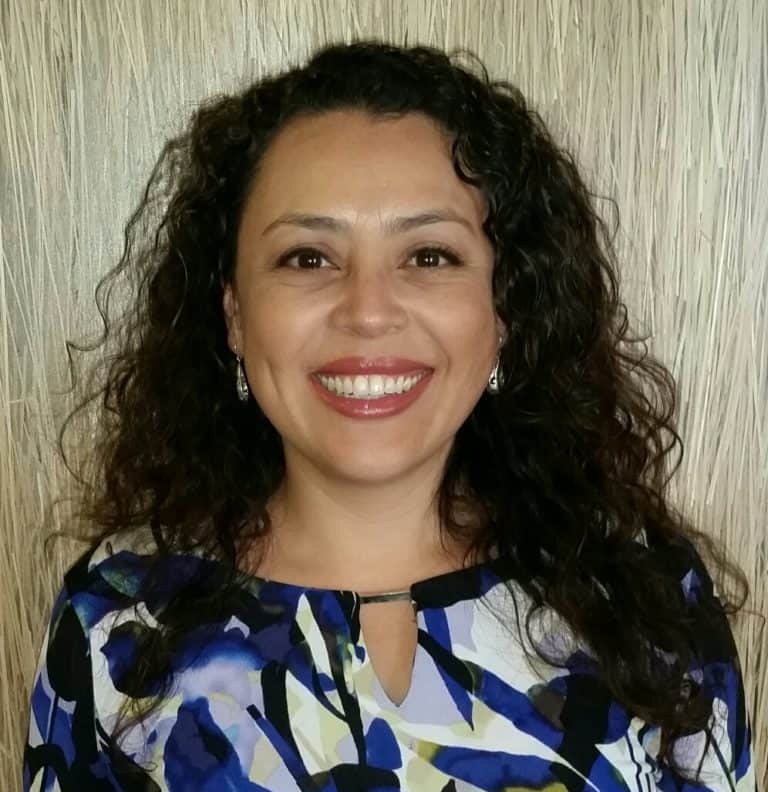
Vickie Ramos Harris
Advancement Project California.
What stands out in the governor’s proposed budget for education?
To respond to the pandemic, we support the governor and Legislature to build on the community schools network to prioritize integrated and coordinated services for the most underserved children, ages birth through eight, to support families through the pandemic and post-pandemic recovery.
What changes would you recommend that the Legislature make to it?
We also think it is critical to build on proposed investments to prioritize strategies that address learning loss, student engagement, and the growing achievement gap and look forward to partnering with the governor and Legislature to focus on student achievement.
Vickie Ramos Harris is director of educational equity of the Advancement Project California, a next-generation, multiracial civil rights organization that works to expand opportunities in our educational systems, create healthy built environments and communities, develop the connective tissue of an inclusive democracy, and shift public investments towards equity.

Marciano Guttierez
Social Studies Instructor/ Academic Adviser
What stands out in the governor’s proposed budget for education?
The $4.6 billion for summer school and extra learning time can address the cumulative impacts on student learning due to Covid. I am hopeful that school districts and stakeholders will have maximum flexibility on the use of these funds to develop strategies that meet the unique needs of their students. I am additionally encouraged by the $500 million that is dedicated to teacher development programs. The looming teacher shortage has been overshadowed by the pandemic, but will nevertheless affect our schools and the education they can provide. These funds are a good first step.
What changes would you recommend that the Legislature make to it?
Teachers are eager to return to the classroom, but are concerned about their health and financial security if they were to get sick. Teachers do not qualify for the traditional state disability programs, so I would hope to have seen legislative language that encourages school districts to develop related safety net programs for those who contract Covid while teaching. This would have gone a long way to provide increased peace of mind.
Marciano Gutierrez is a social studies instructor and Academic Adviser at Foothill Middle College in Los Altos. Marciano currently serves as the Treasurer for the Mountain View Los Altos District Teacher Association, is a state delegate to the National Education Association Representative Assembly and previously served in the Obama Administration as a Teacher Ambassador Fellow in Washington, DC.

John Gray
School Services of California
What stands out in the governor’s proposed budget for education?
Given where we were some nine months ago, the governor’s budget — and specifically the education budget — offers us a collective sigh of relief. We appreciate Governor Newsom’s attention on the critical needs of public education as a cornerstone in society and the economy at large.
John Gray is president and CEO of School Services of California, a business, financial, management, and advocacy resource for educational agencies in California.

Senator Steve Glazer, D-Contra Costa
Chairman of the Senate Select Committee on Student Success
What stands out in the governor’s proposed budget for education?
I am pleased that the governor has focused on the need to safely reopen our schools as soon as possible. We need to ensure that we do so in an equitable way that is mindful of the needs of all communities and students. I am especially happy to see that the governor has set aside money to extend learning time, including summer school programs and efforts to address the pandemic’s impact on student learning.
His proposals to increase funding for special education and early childhood education and to provide a cost-of-living increase for the Local Control Funding Formula also have merit. On higher education, I support the governor’s proposal to block any tuition increase but I would like to see us fully fund the universities, including the CSU graduation initiative.
Steve Glazer, D-Contra Costa, is Chairman of the Senate Select Committee on Student Success.

Jeff Freitas
California Federation of Teachers
What stands out in the governor’s proposed budget for education?
The governor has made education a priority with his budget proposal. However, even at the levels he has proposed, California still needs to raise revenue to have the resources we need for our students to succeed. We are still not funding our schools and community colleges at a level that the fifth-largest economy in the world should.
What changes would you recommend that the Legislature make to it?
We look forward to working with the Legislature and the governor to initiate a long-term vision to fund our schools as we emerge from the pandemic in the coming year. We would like to see our state’s elected officials focus on early childhood education, wraparound services at our schools, and smaller class sizes. We would also like to see more robust support for remote learning this school year, and additional learning opportunities over the summer and in the coming school year.
Jeff Freitas is the president of the California Federation of Teachers.
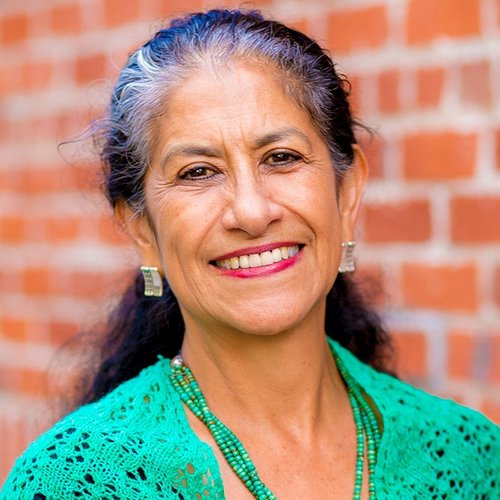
Maria Echaveste
The Opportunity Institute
What stands out in the governor’s proposed budget for education?
The governor’s critical investments will help districts respond to the significant academic, social, and emotional needs of students that have been surfaced by this pandemic but are not new to our state’s Black, Latino and most vulnerable students. We welcome the investments in data and transparency — from a Cradle-to-Career data system, to school climate surveys, to a dashboard of indicators on school reopenings and in-school virus transmissions as part of the “Safe Schools for All” plan. California can become a leader in using “Equity Indicators” — data on disparities in opportunities and outcomes — to drive decisions that will improve how we resource and support schools so that all students can thrive.
What changes would you recommend that the Legislature make to it?
While the state’s investments in mental health, extended learning time, and in-person learning are important and necessary components of our recovery, they must be paired with adequate support for districts and schools to effectively make progress in our schools and for our students. Too often rhetoric and intentions are well-meaning, yet success requires operational attention. Additionally, while it is fortuitous that the California budget did not require huge cuts as previously anticipated, we must be vigilant to ensure equitable allocation of resources and be mindful of serious landmines ahead, such as underfunded pension liabilities which will continue to squeeze local budgets and services for high-need students if unaddressed.
Maria Echaveste is president and CEO of the Opportunity Institute, which works to increase social and economic mobility and advance racial equity through partnership and collaboration with those seeking to promote systems change.

Myrna Castrejón
California Charter Schools Association (CCSA)
What stands out in the governor’s proposed budget for education?
We appreciate that the governor’s budget looks to return students to in-person instruction as soon as safely possible. Our priority must be serving elementary school students and those students who have experienced significant learning loss as a result of distance learning through in-person instruction at all of California’s public schools. California’s highest needs students have been left behind by this pandemic and need immediate support.
This budget creates a starting framework for returning students to the classroom to mitigate learning loss and paying down deferrals. We see these priorities as essential and should be the basis for our state’s education spending plan.
What changes would you recommend that the Legislature make to it?
Additional revenue realized in the current year’s budget should be distributed equitably to all public schools to meet the needs of each and every student. We would like to see deferrals eliminated completely and immediately. We also have significant concerns with the exclusion of non-classroom-based public schools from funding for reopening schools. Schools designated as ‘non-classroom based’ often include a significant site-based component through blended learning programs — in some cases as much, or more, than a traditional public school — but would not be eligible for funding. These schools that provide on-site instruction will have the same challenges of keeping students safe as all other school districts and charter schools.
Myrna Castrejón is president and CEO of the California Charter Schools Association, which supports and advocates for charter schools in California.

E. Toby Boyd
California Teachers Association (CTA)
What stands out in the governor’s proposed budget for education?
We are encouraged by Gov. Newsom’s continued commitment to California’s students and working families. The attention to the immediate needs of Californians comes at a critical time, and we appreciate the support for struggling students, those with special needs, English learners and those who are housing insecure. It is vital that we create safe learning environments for all students especially those most vulnerable amidst the worst surge of the pandemic. We eagerly await the day we can safely return to our classrooms where we know our students learn best and thrive.
What changes would you recommend that the Legislature make to it?
As California remains the nation’s Covid epicenter, CTA continues to support distance learning for schools that are in the highest, Purple Tier of transmission rates. We look forward to continuing to work with the administration and the legislature towards the safe reopening of all public schools. We share many of the concerns that some superintendents and others have articulated about the structure and implementation of the governor’s proposed reopening plan but look forward to continuing to work with the administration and the legislature on ensuring a safe reopening of all public schools.
E. Toby Boyd is president of the California Teachers Association, the membership of which includes K-12 teachers, counselors, school librarians, social workers, psychologists, and nurses as well as community college faculty and education support professionals.

Tatia Davenport
California Association of School Business Officials (CASBO)
What stands out in the governor’s proposed budget for education?
CASBO is encouraged to see Governor Newsom’s commitment to public education by repaying the deferrals and restoring funding that continue to build on prior commitments. For the past 11 years, we have been advocating to increase special education funding, so we are particularly appreciative of this administration’s continued investment in this area.
What changes would you recommend that the Legislature make to it?
We feel that the timing of the governor’s immediate actions relating to reopening schools isn’t congruent with the current Covid-19 reality in our state. Schools need greater financial and public health support, with fewer barriers to access personal protective equipment, testing and vaccinations. The proposed grant application process for in-person instruction and extended learning services are riddled with inconsistencies and omissions of details that are critical for the viability of schools. We urge the Legislature to 1) focus on providing every local education agency with ongoing, stable funding to implement health and safety protocols; 2) provide limited liability protection for school districts that demonstrate they will implement and abide by all guidance standards against monetary liability for COVID-19 related claims; and 3) build a robust testing, tracing and vaccination infrastructure to set us on a path that empowers schools to safely reopen and reduces further disruption for our most vulnerable students.
Tatia Davenport is chief executive officer at the California Association of School Business Officials, representing over 24,000 school business officials statewide on legislative matters affecting public education finance.

Elisha Smith Arrillaga
The Education Trust—West
What stands out in the governor’s proposed budget for education?
There is no pandemic recovery without education recovery. This proposed budget is a good first step to an Equity First budget. What stood out to us was the $15 million investment for a statewide cradle-to-career data system and proposal requiring all high school seniors complete a financial aid application — two proposals ETW has advocated for nearly a decade. We were also encouraged by investments to the Master Plan for Early Learning and Care, to the K-12 teacher workforce, funding to address learning loss, to close the digital divide for higher education students and funding for emergency student financial aid.
What changes would you recommend that the Legislature make to it?
For early childhood education, we hope the governor includes state-funded preschools in “Safe Schools for All”, which currently begins with TK. For K-12, we will monitor whether investments focused on education recovery continue to be targeted at the most vulnerable students and whether state leaders encourage schools and districts to meaningfully engage parents and students.
For higher education, we hope that the requirement for high school seniors to complete a financial aid application be strengthened with funding. We will monitor the proposed competitive Cal Grant investments along with the anti-racism initiatives in the proposal.
Elisha Smith Arrillaga serves as the executive director of The Education Trust-West, a research and advocacy organization focused on educational justice and supporting the high achievement of all California students, with a particular focus on underserved students of color, low-income students, and English learners.

John Affeldt
Public Advocates
What stands out in the governor’s proposed budget for education?
Public education across the country has taken a hit in credibility and even ongoing viability with enrollments shrinking, students disengaging and parents souring on remote learning. Governor Newsom should largely be applauded for trying to spur safe school reopening and address pandemic-induced lost instructional time with his two Covid headliners: a $2 billion school reopening incentive grant and a $4.6 billion expanded learning time grant program. The funds for the latter should be allocated by concentration of high-need students and used to ensure a truly “restorative” return to school. That means no drill and kill remediation; innovative, rich and engaging learning opportunities; and tailored social/emotional supports.
What changes would you recommend that the Legislature make to it?
The very real possibility remains that districts and unions will not be able to come to agreements by February or March 1 to take advantage of the reopening grants. What then? The Legislature should consider imposing state reopening standards for those not reaching agreement, requiring March 1 or April 1 reopenings unless Covid rates dictate otherwise. It also makes sense to tie vaccinations to school reopenings. Only educators on track to return in-person should be prioritized for vaccines; also, educators and then students in the most impacted communities should be advanced in the vaccine queue ahead of other less.
John Affeldt is managing attorney for Public Advocates, a nonprofit law firm and advocacy organization that challenges the systemic causes of poverty and racial discrimination.
To get more reports like this one, click here to sign up for EdSource’s no-cost daily email on latest developments in education.










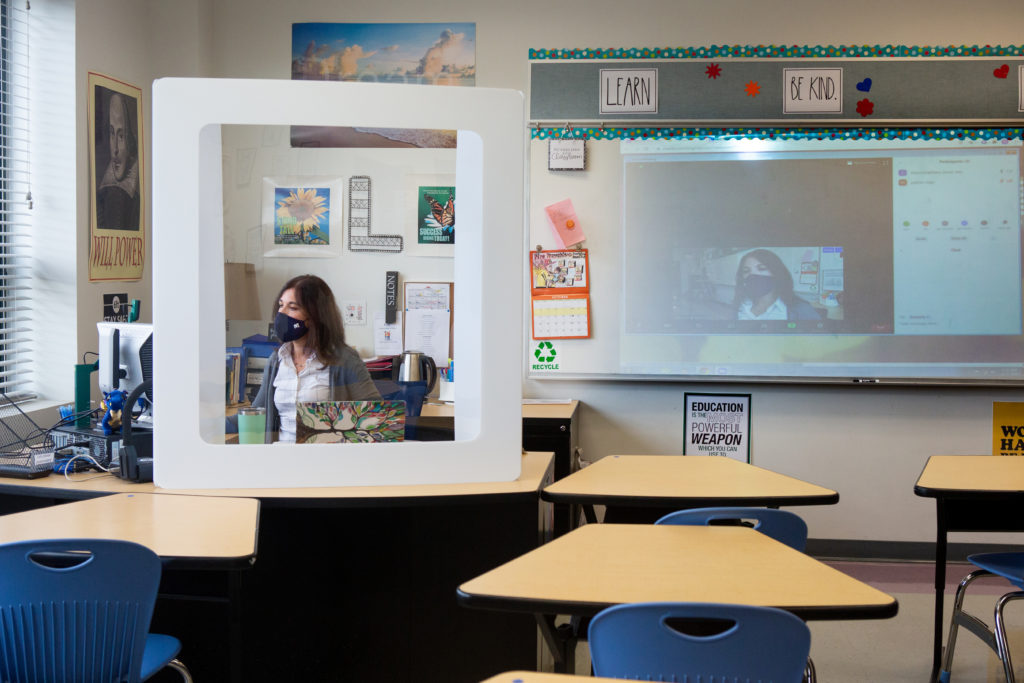

Comments
Comments Policy
We welcome your comments. All comments are moderated for civility, relevance and other considerations. Click here for EdSource's Comments Policy.